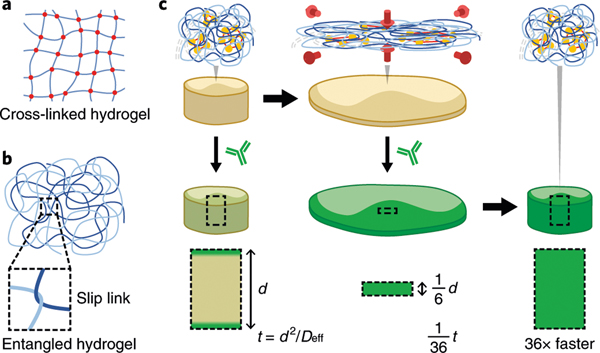Fig. 1 |. ELAST.
a,b, Schematic drawings describing two hydrogel-forming mechanisms: chemically cross-linked (a) and physically entangled (b) hydrogels. Physical slip links render entangled hydrogel elastic. c, Schematic illustration describing the principle of fast probe delivery in ELASTicized tissue by reversible shape transformation. Biomolecular networks in an ELASTicized tissue follow the transient shape change of the synthetic entangled gel (from left to right) in a reversible way. The timescale (t) for probe delivery into the tissue is proportional to the square of the tissue thickness (d). Transient n-fold thinning of an ELASTicized tissue can accelerate the probe delivery by n2.

